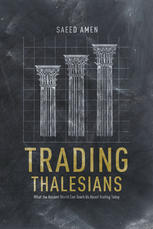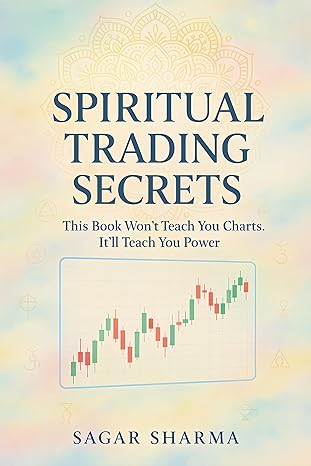Following the bankruptcy, equities were sold aggressively by investors, as were any assets perceived to be risky. The S&P500 moved from around 1,250 points, just before the bankruptcy, to a low below 700 points by March 2009. At the same time, safe haven assets rallied in a flight to safety (see Chapter 2 for our discussion of safe haven and risky assets). The US dollar rallied from $1.44 per euro to $1.25 in the space of a few weeks. The Federal Reserve and other major central banks slashed interest rates as a reaction to the cri- sis. When short-term rates could not be cut any further, the Federal Reserve embarked upon the policy of quantitative easing, effectively creating money to buy US Treasuries and other fixed income instruments in an effort to push down longer-term borrowing costs. More worryingly, the turmoil quickly spilled over into the real economy, which globally went into recession. Unemployment in the US peaked at nearly 10% in October 2009 according to the Bureau of Labor Statistics. In the US, the recession ended up lasting one and a half years, from December 2007 to June 2009, according to the National Bureau of Economic Research (NBER). GDP fell by 5.1% during this period. This was the largest drop since the recession of 1 2 Trading Thalesians 1945 after the end of World War II. Many books have been written about the financial crisis, covering its many different angles. I have read many over the years. One of my favorites is Too Big to Fail (Sorkin, 2010), which in its detailing of the crisis includes the myriad of deals done to save failing banks. Another book I can thoroughly recommend is The Greatest Trade Ever (Zuckerman, 2010), which tells the other side of the crisis, namely those few investors who shorted subprime and thus profited during the crisis. I was also lucky enough to hear Gregory Zuckerman speak at the Thalesians about his book.
چکیده فارسی
بعد از ورشکستگی، سرمایهگذاران، سهام را به شدت فروختند، همانطور که هر دارایی ریسکپذیر تصور میشد. S&P500 از حدود 1250 امتیاز، درست قبل از ورشکستگی، تا مارس 2009 به کمتر از 700 امتیاز رسید. در همان زمان، دارایی های پناهگاه امن در یک فرار به سمت امن افزایش یافت (برای بحث در مورد پناهگاه امن و دارایی های پرخطر به فصل 2 مراجعه کنید. ). دلار آمریکا در عرض چند هفته از 1.44 دلار به ازای هر یورو به 1.25 دلار افزایش یافت. فدرال رزرو و سایر بانک های مرکزی بزرگ در واکنش به این بحران، نرخ بهره را کاهش دادند. زمانی که نرخهای کوتاهمدت نمیتوانست بیشتر از این کاهش یابد، فدرال رزرو سیاست تسهیل کمی را در پیش گرفت و عملاً پولی را برای خرید اوراق خزانهداری ایالات متحده و سایر ابزارهای با درآمد ثابت در تلاش برای کاهش هزینههای استقراض بلندمدت ایجاد کرد. نگرانکنندهتر، این آشفتگی به سرعت به اقتصاد واقعی سرایت کرد که در سطح جهانی وارد رکود شد. بر اساس گزارش اداره آمار کار، بیکاری در ایالات متحده در اکتبر 2009 به 10 درصد رسید. بر اساس گزارش دفتر ملی تحقیقات اقتصادی (NBER) در ایالات متحده، رکود اقتصادی یک سال و نیم از دسامبر 2007 تا ژوئن 2009 به طول انجامید. تولید ناخالص داخلی در این دوره 5.1 درصد کاهش یافت. این بزرگترین افت از زمان رکود 12 تالسیان بازرگانی در سال 1945 پس از پایان جنگ جهانی دوم بود. کتاب های زیادی درباره بحران مالی نوشته شده است که زوایای مختلف آن را پوشش می دهد. من در این سال ها مطالب زیادی خوانده ام. یکی از موارد مورد علاقه من، خیلی بزرگ برای شکست است (سورکین، 2010)، که در جزئیات خود از بحران شامل معاملات بی شماری است که برای نجات بانک های در حال ورشکستگی انجام شده است. کتاب دیگری که می توانم به طور کامل توصیه کنم، The Greatest Trade Ever (Zuckerman, 2010) است، که طرف دیگر بحران را بیان می کند، یعنی آن معدود سرمایه گذارانی که زیر پرایم کوتاه کردند و در نتیجه در طول بحران سود بردند. من همچنین به اندازه کافی خوش شانس بودم که صدای گریگوری زاکرمن را در جمع تالسیان ها درباره کتابش شنیدم.
ادامه ...
بستن ...
Author(s): Saeed Amen (auth.)
Publisher: Palgrave Macmillan UK, Year: 2014
ISBN: 978-1-349-48578-9,978-1-137-39953-3
ادامه ...
بستن ...










